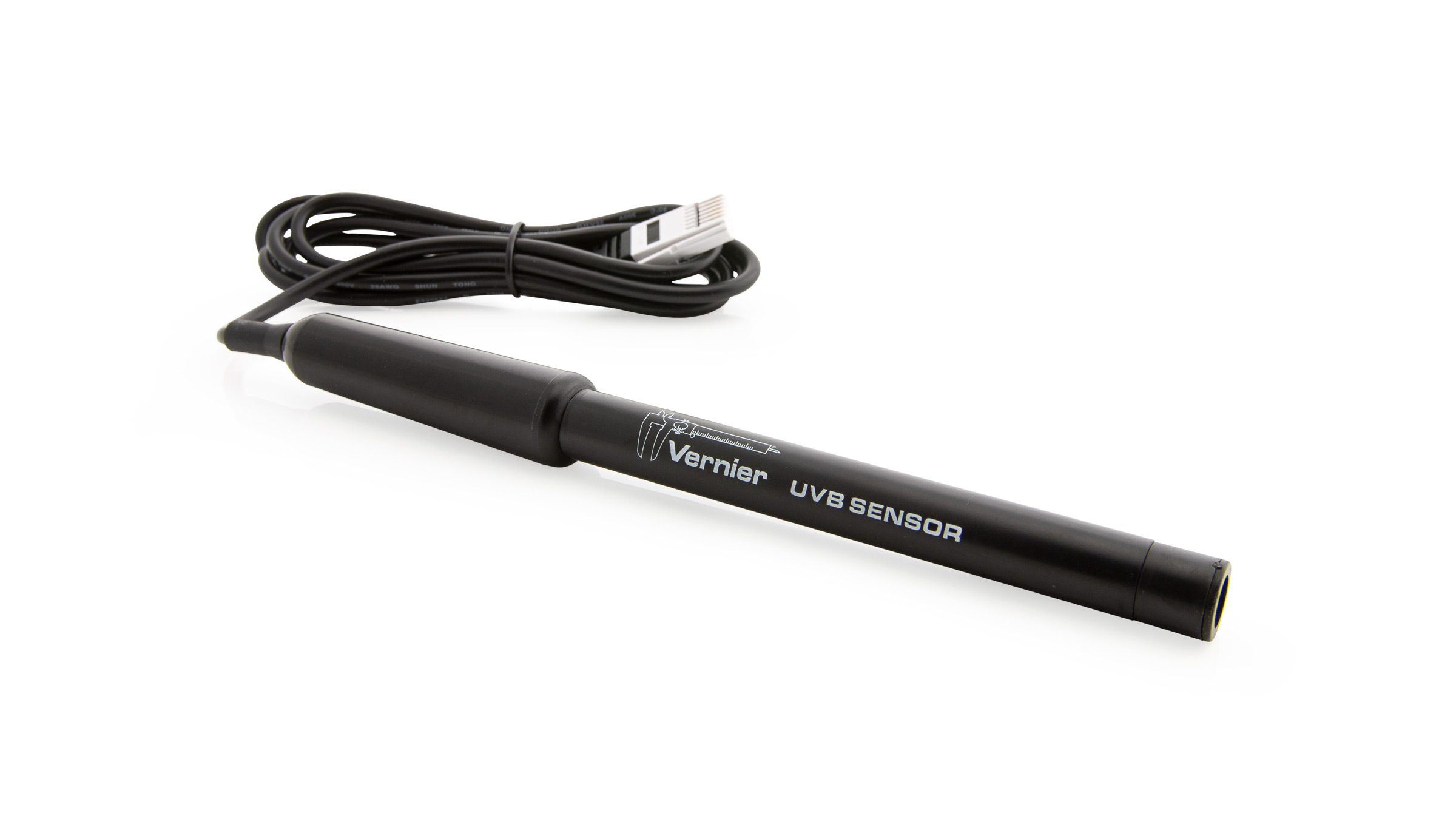UVB Sensor (UVB-BTA )

Troubleshooting
- Primary Test: Are you using the UVB Sensor to check UVA light? Confirm that the sensor is appropriate for the experiment.
- Secondary Test: Take readings outdoors in the sunlight with and without a barrier, such as a sunglasses lens. Confirm that the readings are in the normal range for your area.
Additional Troubleshooting
- How do the Vernier UVA and UVB sensors work?
- Which UV sensor should I purchase--UVA or UVB?
- UVA Sensor Troubleshooting and FAQs
- Where can I purchase a UV light source?
- Why does my UVA or UVB sensor display incorrect units in Logger Pro v3.4.5.1 and older?
- Does Vernier sell a weather station?
Specifications
- UV peak sensitivity: one Volt per 204 mW/m2 at 300 nm
- Wavelength sensitivity region, approximate: 265 to 322 nm, 10% sensitivity points.
- Typical Resolution: 0.25 mW/m2
- Dimensions: 21 cm by 2 cm diameter
- Time response: ~ 2 seconds to reach 95% of final reading
- Stored calibration coefficients: slope (gain) = 204 mW/(m² V); intercept (offset) = 0
Calibration
Calibrate? No. The sensor is set to the stored calibration before shipping. It is quite difficult to calibrate a UV sensor to read in absolute units, since you must have a source of known UV intensity and spectral distribution. More often, you will simply want to calibrate the sensor in terms of a relative intensity as noted below.
- Cover the tip of the UVB Sensor with a clean opaque object.
- Select the calibration option of the program you are using.
- Enter 0 (zero) as the first known intensity, then click or tap Keep.
- Now allow full UV intensity to strike the sensor.
- Since the orientation of the sensor affects the reading, it is best to hold the sensor in place with a ring stand or other clamp.
- To point the sensor directly at the sun, make the shadow of the sensor tube as small as possible.
- Enter 100 as the next known intensity, then click or tap Keep.
- Exit the calibration dialog. Measurements of the sensor will be relative to this second intensity.
For more information on calibration, see How do I calibrate my sensor?
Related Products
- UVA Sensor (
UVA-BTA ) - Go Direct® Light and Color Sensor (
GDX-LC )
